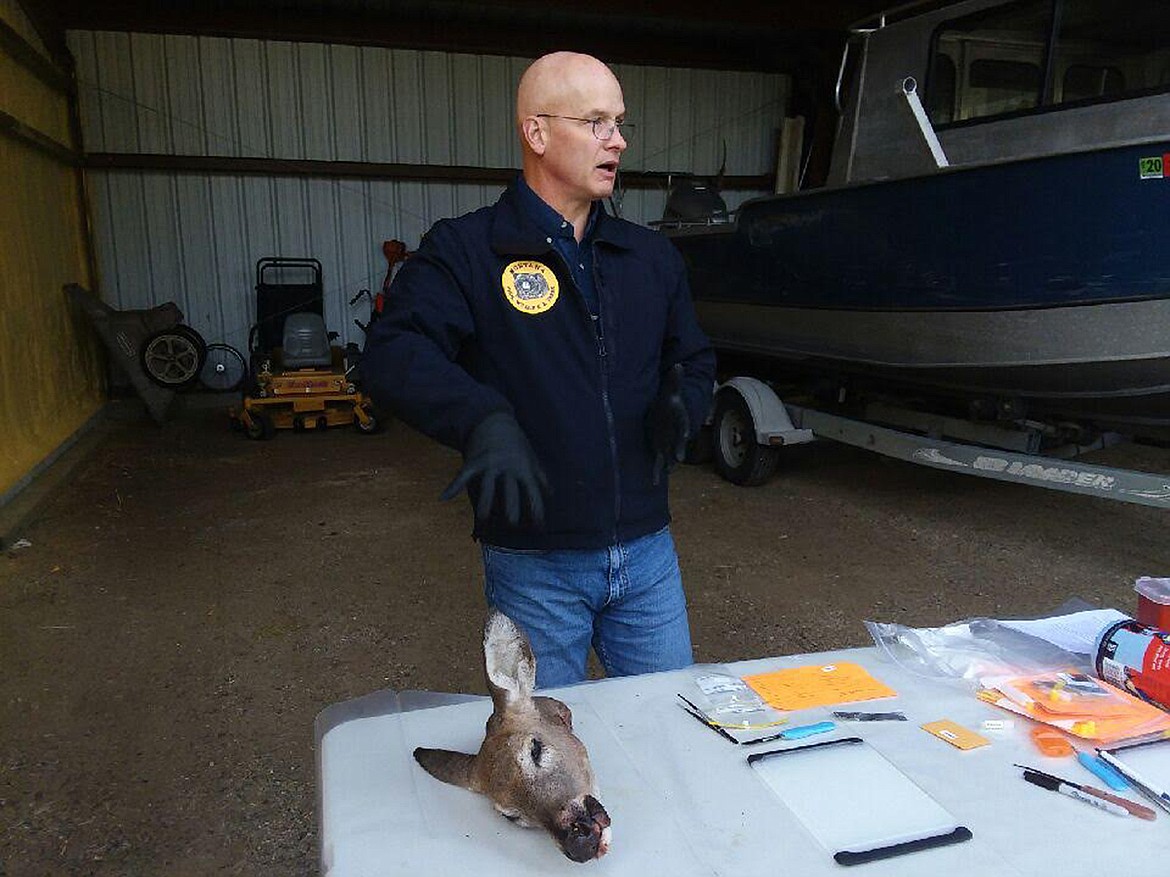CWD workshop illustrates testing process
Montana Fish, Wildlife and Parks provided the Environmental Quality Council with a chronic wasting disease workshop in Libby Wednesday morning.
The workshop allowed council members to ask questions about CWD and to see the testing process first-hand.
Libby is considered a high-risk CWD zone, which brings apprehension to the community about the current and future hunting seasons.
State Rep. Steve Gunderson, the District 1 representative from Libby and a member of the Environmental Quality Council, said not getting a handle on chronic wasting disease could be devastating to Libby’s economy.
“Lincoln County is one of the premier hunting destinations in Montana and with CWD being such a devastating disease to deer, elk and moose, it could really devastate our economy here that relies on hunting,” Gunderson said.
Gunderson is a member of the Joint Interim Committee on Environmental Quality Control, Natural Resources Committee and Business and Labor Committee as well as the vice chair of the Local Government Committee.
“The role of the EQC is mostly advisory, but we can write bills that become laws and we have oversight over FWP and DEQ, so if we something we feel is not going in the good direction we can do something about it.”
CWD is a progressive, fatal disease affecting the nervous system of mule deer, white-tailed deer, elk and moose. CWD is not a bacteria or virus, but rather a protein (prion). These prions are found throughout bodily tissues and are shed into the environment, animal to animal, before and after death.
“It’s called chronic wasting disease because the condition of the animal starts to deteriorate over time,” said Neil Anderson, Fish, Wildlife and Parks wildlife program manager. “After approximately 16 to 24 months, “they are nothing but skin and bones.”
To date, there have been 10 confirmed cases of CWD in the Libby area. The positive cases have all been white-tailed deer, but CWD can infect mule deer, elk and moose. The older the animal is, the more likely it is to get CWD. Anderson says that bucks are three times more likely to have CWD.
For the 10 confirmed cases in Libby, FWP officials say they can’t conclusively tell how long the deer have had CWD. However, officials said, the deer at the symptomatic- or obviously ill-stage have likely had CWD for a while.
“An animal can look perfectly healthy to us, but in those early stages they can still shed those prions and we wouldn’t know it,” Anderson said. “That’s what makes detecting CWD a challenge.”
Currently, there is no way test live animals. Officials have no way to confirm CWD without sending a sample in for analysis. FWP sends all testing samples to Colorado State University in Fort Collins.
When FWP officials prepare samples to send, they cut out the lymph nodes, or brain stem in moose cases, from the deer or elk being tested.
For accurate tests, it’s imperative that the animals’ head and spinal column not be tampered with prior to removal.
It can take up to 10 business days to receive lab results. And upward of three weeks, often less, for reported results to be sent to the hunter or person who submitted the animal for testing.
Anderson estimates that the cost to the state to test each sample averages $20. The lab results, positive or negative, help inform the next steps in addressing the Libby CWD Management Zone.
A little over 70 miles north of Libby, British Columbia, Canada is also testing for CWD, but so far, has had no confirmed cases. There are cases of CWD across the world, including South Korea, Norway and Sweden.
If CWD is left unmanaged, it can cause significant declines in populations down the road. Anderson commended the community for its cooperation, “It’s been a great small-town effort to tackle this issue.”




